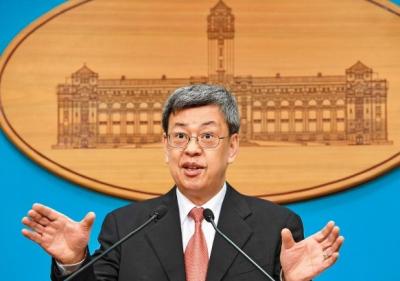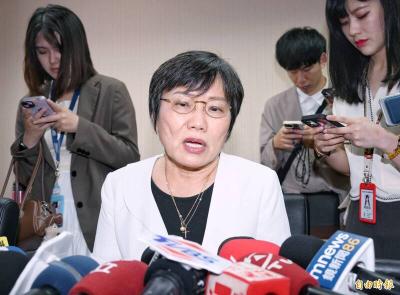A “second democratic reform,” which focuses on decentralization, privatization of state enterprises and promoting civil political participation is necessary to address the country’s economic woes and stalled political reform, former president Lee Teng-hui (李登輝) said yesterday.
Lee, who helped orchestrate Taiwan’s democratization in the early 1990s, later described as the “silent revolution,” said it was time for Taiwan to take another giant step forward to lift the country out of the mire.
“The effort would have to begin from enforcing local autonomy, improving government efficiency and promoting the development of civil society,” said Lee, who celebrates his 91st birthday today.
Lee, who was president from 1988 to 2000, publicized a 10-point recommendation yesterday that summed up the conclusion of seminars organized by his foundation last year on the nation’s economy and local autonomy.
Decentralization was one of the main themes in the recommendation, as Lee called for the central government to empower local governments with more authority on personnel, education and finance because, judging from current government efficiency and national finance, the central government would not be capable of dealing with various tasks in a diverse society.
Lee proposed the establishment of an independent committee to research the feasibility of relocating the capital from Taipei to address the increasingly imbalanced regional development and population concentrations.
To boost local industrial development, Lee said the government should promote regional development, adding that a mechanism of employment referrals out from Taipei should be established to encourage young people work in and help develop their hometowns.
Another primary aspect of Lee’s recommendation was privatization of state-owned enterprises, such as Taiwan Power Co (Taipower) and CPC Corp, Taiwan, revitalization of fallow land and release of state-owned property.
Privatization of those enterprises would bring in much-needed competition and eventually allow regional private operators to provide better services and infrastructure in sectors such as fuel and electricity, he said.
In response to media enquiries about the Democratic Progressive Party’s (DPP) prospect in the upcoming seven-in-one municipal elections in December and the presidential election in 2016, the former president said a “selfless leader” would be crucial for the party’s success.
The main reason behind the loss of former DPP chairperson Tsai Ing-wen’s (蔡英文), whom Lee endorsed in the presidential election in 2012, was “not necessarily” because of her weak China policy, Lee said.
“I would say the lack of cooperation and solidarity in the party was why she had lost the election,” he said.

Taiwan would welcome the return of Honduras as a diplomatic ally if its next president decides to make such a move, Minister of Foreign Affairs Lin Chia-lung (林佳龍) said yesterday. “Of course, we would welcome Honduras if they want to restore diplomatic ties with Taiwan after their elections,” Lin said at a meeting of the legislature’s Foreign Affairs and National Defense Committee, when asked to comment on statements made by two of the three Honduran presidential candidates during the presidential campaign in the Central American country. Taiwan is paying close attention to the region as a whole in the wake of a

President William Lai (賴清德) has appointed former vice president Chen Chien-jen (陳建仁) to attend the late Pope Francis’ funeral at the Vatican City on Saturday on his behalf, the Ministry of Foreign Affairs said today. The Holy See announced Francis’ funeral would take place on Saturday at 10am in St Peter’s Square. The ministry expressed condolences over Francis’ passing and said that Chen would represent Taiwan at the funeral and offer condolences in person. Taiwan and the Vatican have a long-standing and close diplomatic relationship, the ministry said. Both sides agreed to have Chen represent Taiwan at the funeral, given his Catholic identity and

Chinese Nationalist Party (KMT) Chairman Eric Chu (朱立倫), spokeswoman Yang Chih-yu (楊智伃) and Legislator Hsieh Lung-chieh (謝龍介) would be summoned by police for questioning for leading an illegal assembly on Thursday evening last week, Minister of the Interior Liu Shyh-fang (劉世芳) said today. The three KMT officials led an assembly outside the Taipei City Prosecutors’ Office, a restricted area where public assembly is not allowed, protesting the questioning of several KMT staff and searches of KMT headquarters and offices in a recall petition forgery case. Chu, Yang and Hsieh are all suspected of contravening the Assembly and Parade Act (集會遊行法) by holding

Lawmakers from the Democratic Progressive Party (DPP) yesterday established a friendship group with their counterparts in Ukraine to promote parliamentary exchanges between the two countries. A ceremony in Taipei for the Taiwan-Ukraine Parliamentary Friendship Association, initiated by DPP Legislator Chen Kuan-ting (陳冠廷), was attended by lawmakers and officials, including Deputy Minister of Foreign Affairs Francois Wu (吳志中) and European Economic and Trade Office in Taiwan Director Lutz Gullner. The increasingly dire situation in Ukraine is a global concern, and Taiwan cannot turn its back when the latter is in need of help, as the two countries share many common values and interests,